Intro
CYC presented each of the Sweet Tooth Hotel Intangible artists with the opportunity to write their own guest post for the CYC blog. We told them they could write a post over any topic related to their install or CYC AIR experience. The following blog post is written by Molly Sydnor, aka @mollymargaretdesigner! Molly is a multidisciplinary artist, graduate of the Maryland Institute of Art's Fiber program, and a queer biracial black woman!
Written by Molly Sydnor
My immediate thoughts were "while I could absolutely make something pretty for people to stand in front of and take photos, that is less appealing because we've seen that/continue to see that around the world. How do I make something that is equally conceptual, appealing in person, and in photos?" I truly wanted an experience that makes you put your phone down. If people were going to be photographing my space, I wanted action shots of people physically interacting. I also didn't want photos to spoil other people's experience because they had previously seen so many photos. I wanted people to have to be in the space to fully enjoy it, hiding some elements that cannot be seen in most images. Murals, instagram pop ups, and honestly even some museums these days are being used to not enjoy, but just take a photo to look cool. Interactive inclusion is lacking from spaces whose sole purpose is to look good for photos.
Take the Museum of Ice Cream for example…you walk through a line of people taking turns taking your photo. While at the end you have beautiful photos, you lack the fun of experiencing something for yourself. There is little to no surprise because you've seen it already on instagram. Photos are so heavily enforced and in focus you lose the sense of play. Which is ironic because the Museum of Ice Cream was brilliantly thought out in their exhibition design work. The details were all there yet lost its touch by stopping to take photos every minute throughout the experience. Or 29 rooms for another example, where everywhere you walk you are in the way of someone’s photo. There might as well be a sign saying stand here, or take a photo there. I wanted a whole room made with photos in mind but participating in the work creates the best art, the best photo, the best experience. If you see a photo of a swing you'll still experience pumping your feet and wind through your hair.
The merge between installation art and accessibility is crucial. Art being understood by both the trained (pretentious) eye but also the average joe, how can I make something both visually appealing and functional? How can I make something so immersive that it photographs well but isn't given away losing its surprise appeal? In creating something tangible/intangible, how can I hide things in the details while also losing them from far away?
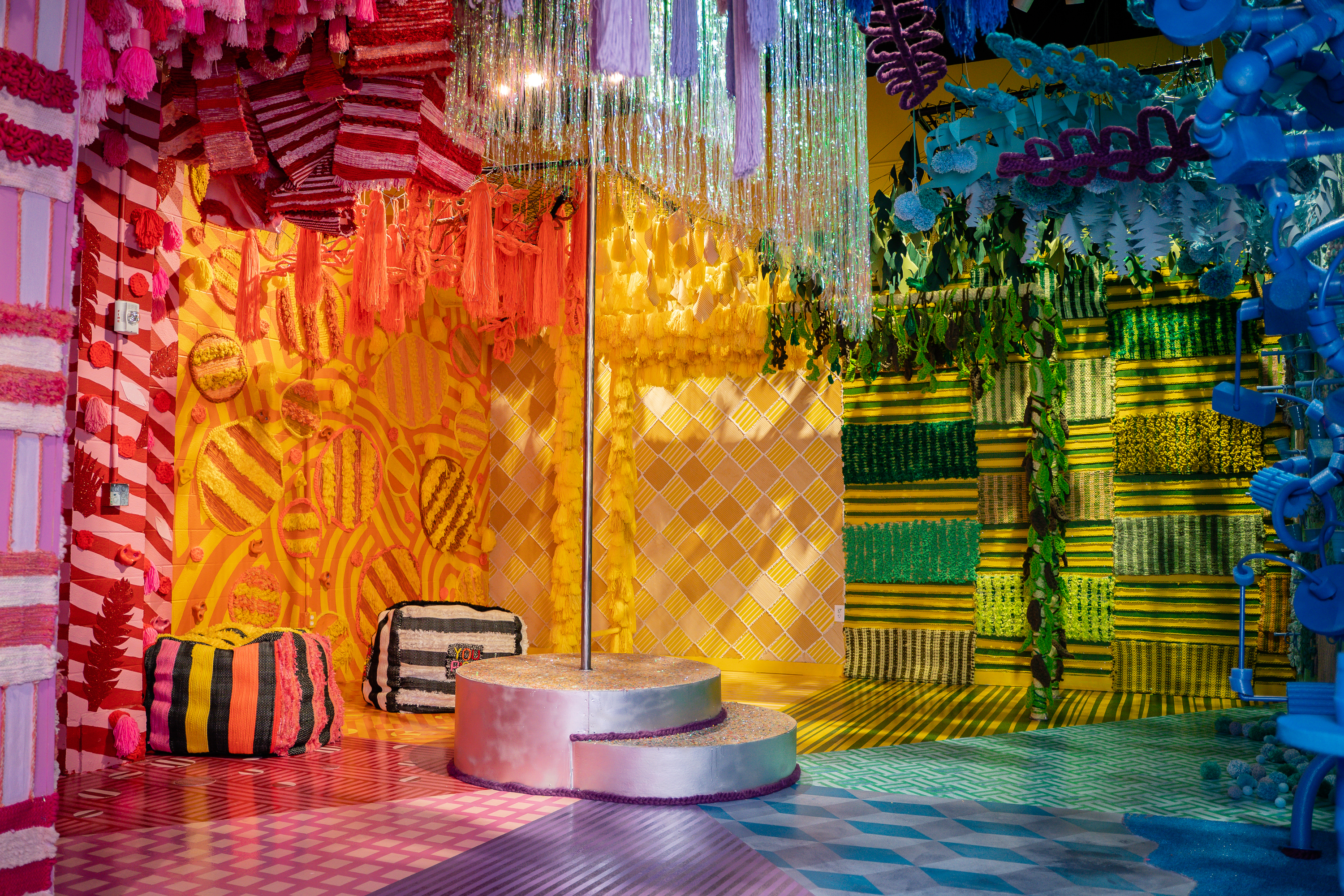
The artists I looked at off the bat were:
-Camille Walala and Felipe Pantone: Both bright and playful yet geometric design work being so large scale and understandable was key. I wanted to color block and make mural-like walls and floors.
-Frank Stella: his juxtaposition of color and line play was something I wanted to work on. The work being not quite optical but almost.
-Nick Cave: first of all... who doesn't love the brilliance of a Nick Cave sound suit? But in all seriousness I studied the way the fiber moved with the body and the integration of play in textile work. While I wasn't making performance for the body, I was still including the body in the fiber work. Nick Cave was going to be a great resource for me for color play as well.
-Carlos Cruz-Diez: Pure eye trickery. This artist has got it goin on!
-Julio Le Parc: I saw his work at Art Basel my first year going in 2016 and this work was so integral in my experience as an artist. The work was brilliant and everything an installation fine artist could dream of. It was the perfect blend of fine art, meets installation, meets experience. On top of the fact that it is all very optical and trickery.
-Agnes Martin: Her line and repetition work
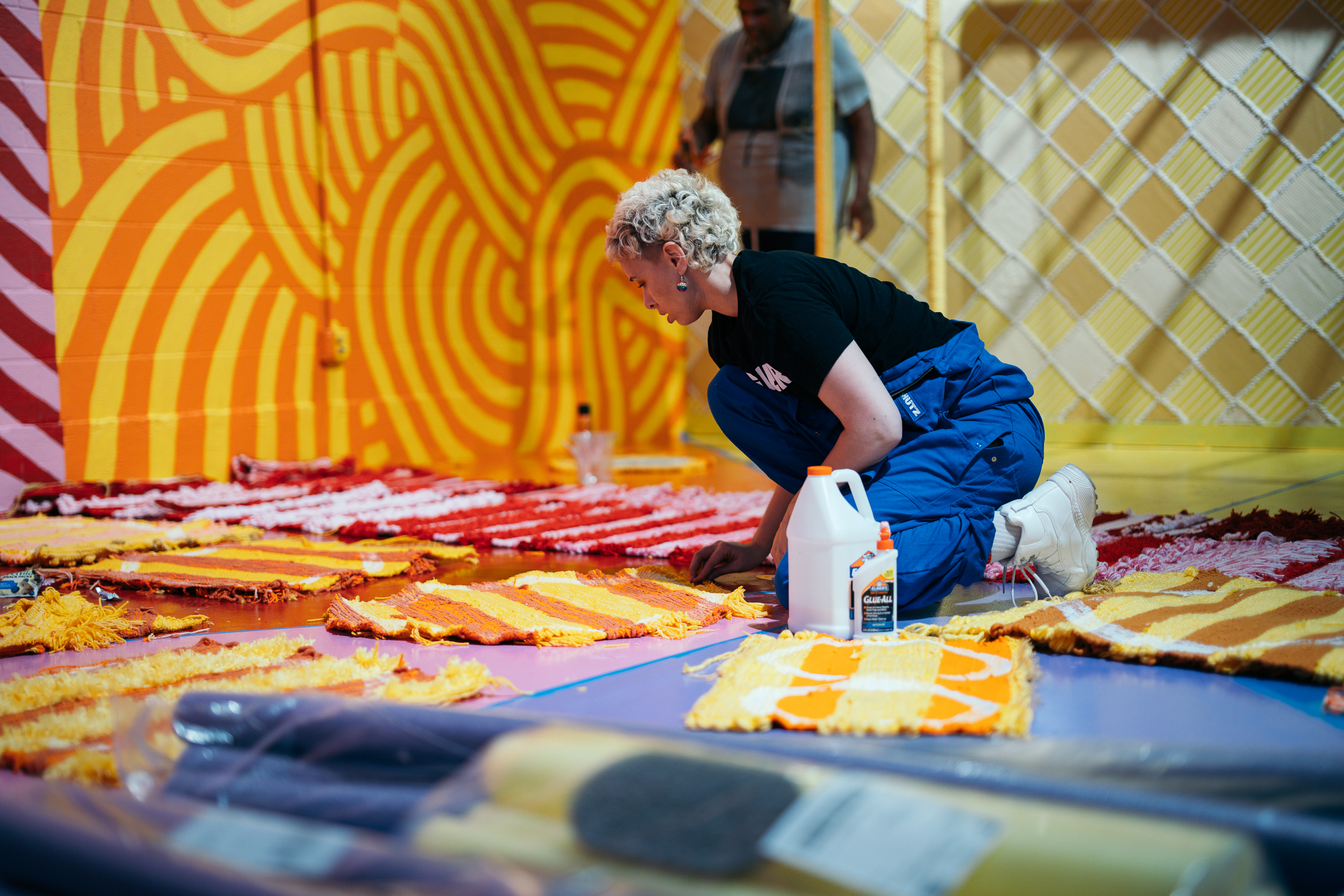
My install pitch seemed so simple, a playground memory experience, taking the word jungle into consideration to allow interaction between visitors and the art. It was to be a "simple" design that utilizes the space. The pieces included the stage, a climbing rope, 1-2 swings, monkey bars, rock climbing pegs, and at one point I pitched a slide. All tastefully (and safely) placed as per concept. The floor was to include markings of games insinuating twister, hopscotch, and four square. I even considered a giant pom for “tether ball”. Some intangible playground concepts were to be added higher and more out of reach. When I sat with Jencey, I think she may have thought I was insane! I had way too many things going on and not nearly enough time or budget. We put together a sketch that made sense for the space and timeline. I scratched the slide, swings, and rope thinking first and foremost safety. We then stuck to a plan that would allow the best execution of time and space. We split the room into sections and conceptualized one or two interactive opportunities per fourth of the room. This was probably the most important step of my install, making it realistic and doable!
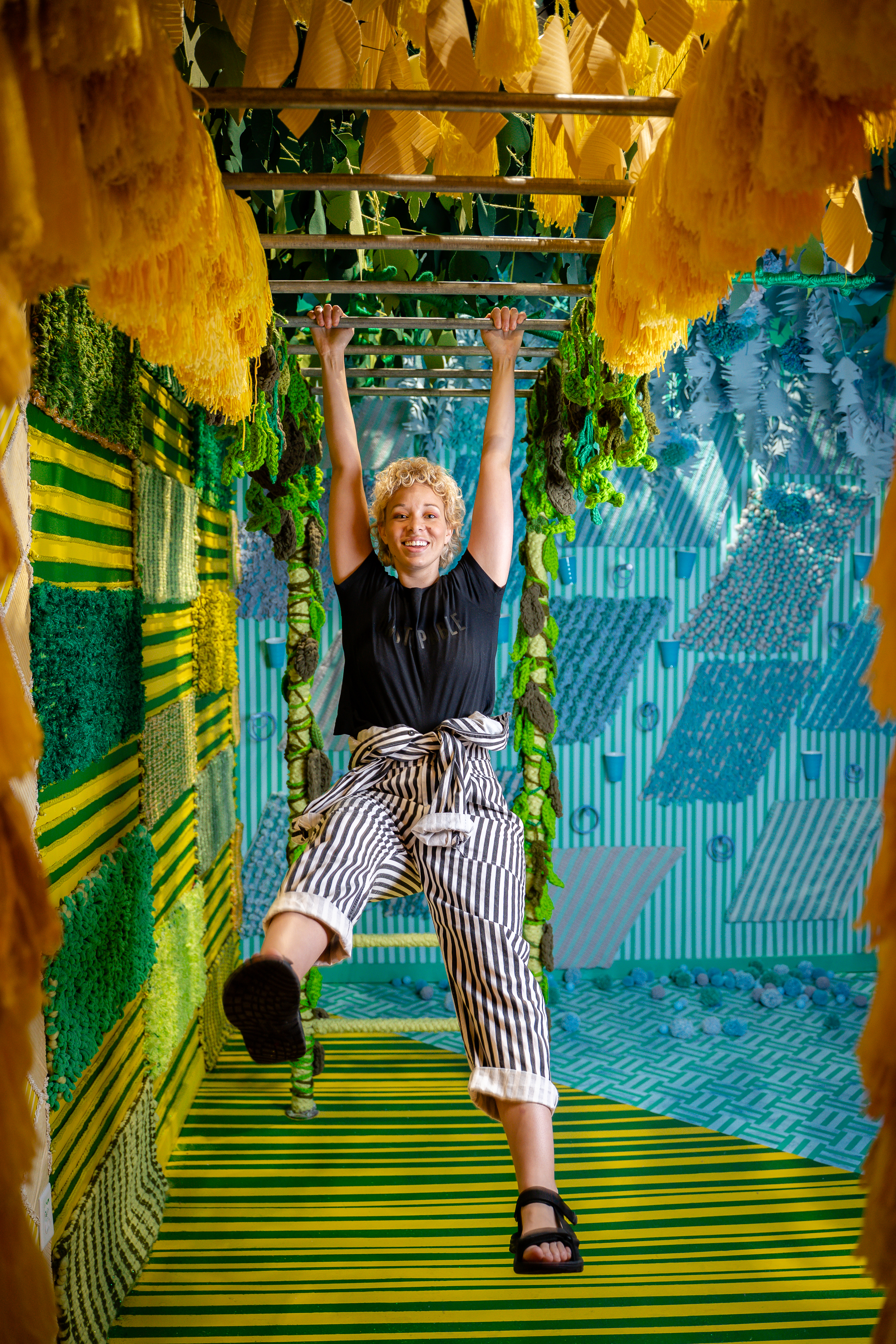
Through many failed experiments, broken weavings, spray paint disasters, restless nights of no sleep, and even a pandemic. Temporal Jungle eventually came together and was even more than I had hoped it would be. Temporal Jungle explores the dualities that exist within the in/tangible forces of memory. I question what we remember from our childhood and how it blends into our grown up narratives. I'm curious if photographs, home videos, and family stories change what we remember from our real experience. Mixing in fictional movies, books, and stories told by friends, is what we remember truly our own experience, or that of someone else? I intended to explore how our growth into adults changes our perspectives of past memory.
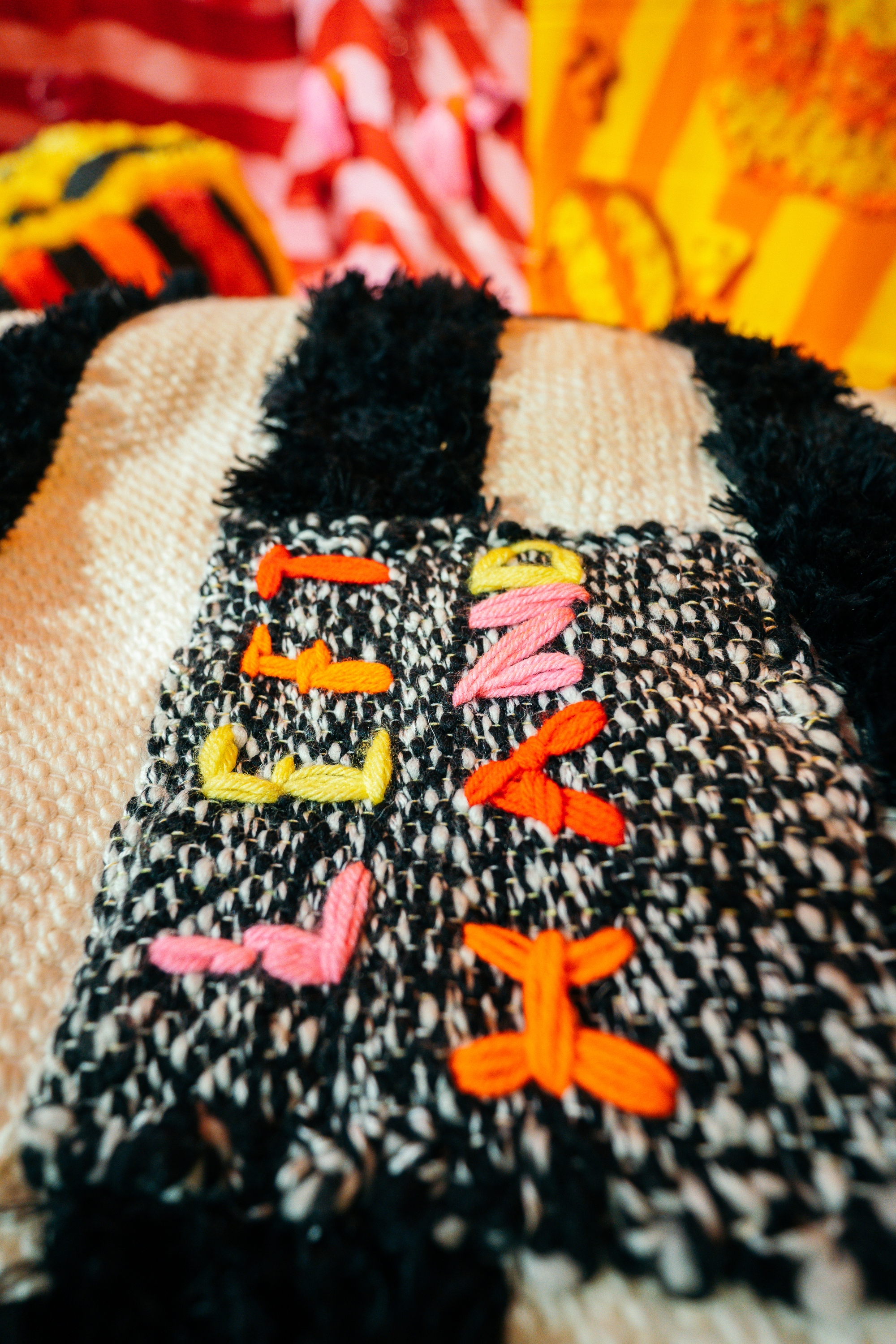
Our temporal lobes are an integral part of memory storage. This installation derives from childhood memories of jungle gyms. Temporal Jungle is a push and pull between the real and the illusory. While some pieces are interactive, others are simply visual. Recognizable and nostalgic objects juxtapose with sexual innuendos and more “Adult” content. The surface of the installation is based on what is seen. Playing with geometry, color trickery, and texture, I formed an environment of optical illusory space. Using an op-art approach to create an intangible backdrop for a tangible jungle gym, the work is a community experience of memory, dreams, and fantasy. A playground that plays on what we think we are seeing, what we are remembering, and what is actually there.
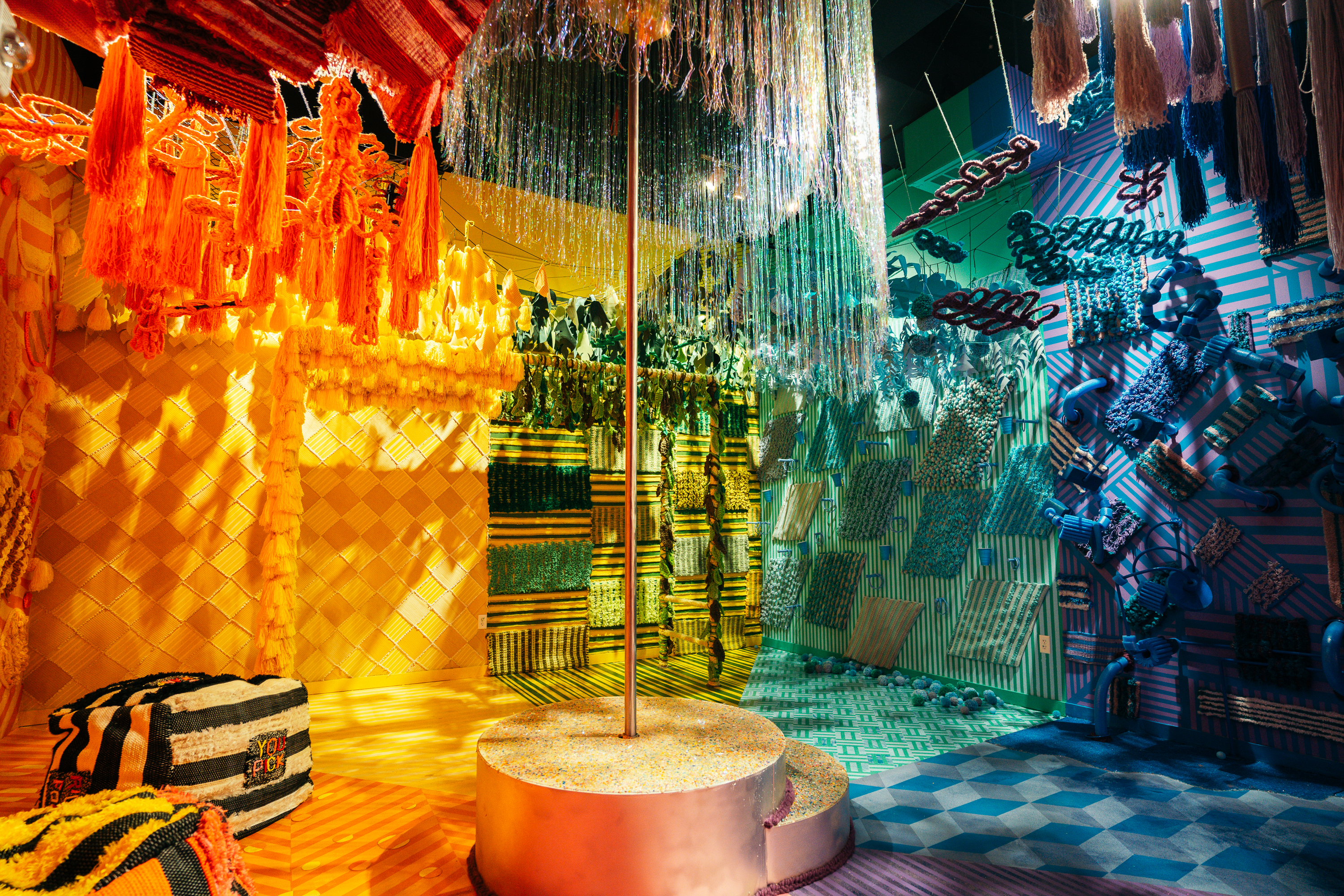
All photos courtesy of TA Visuals.
